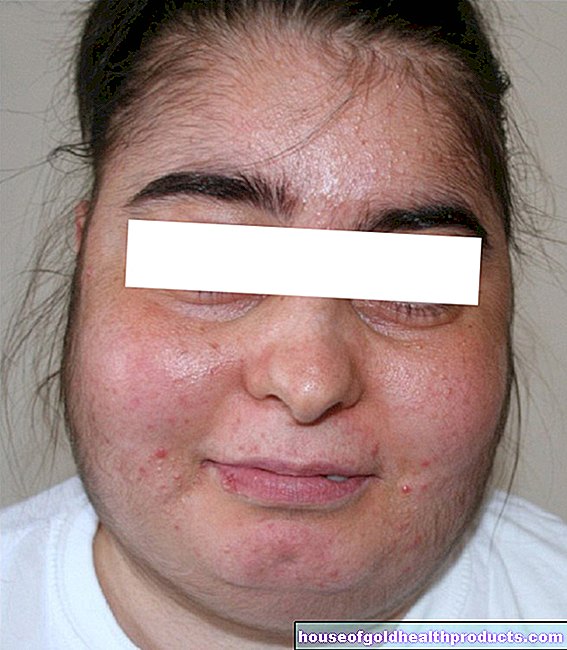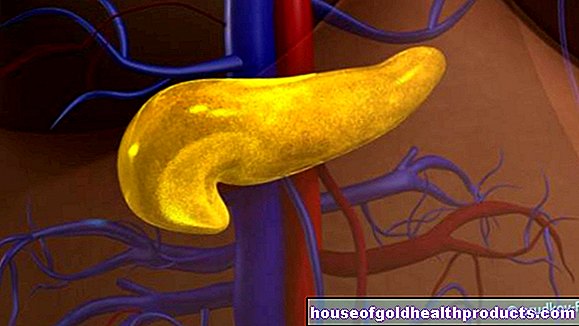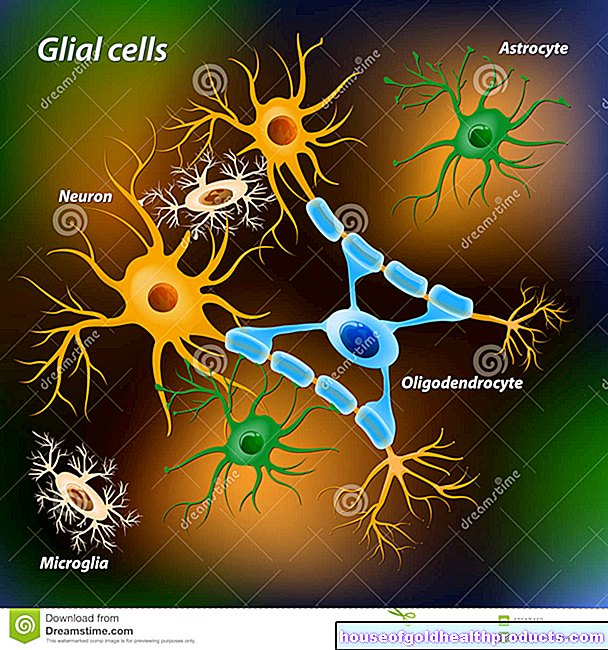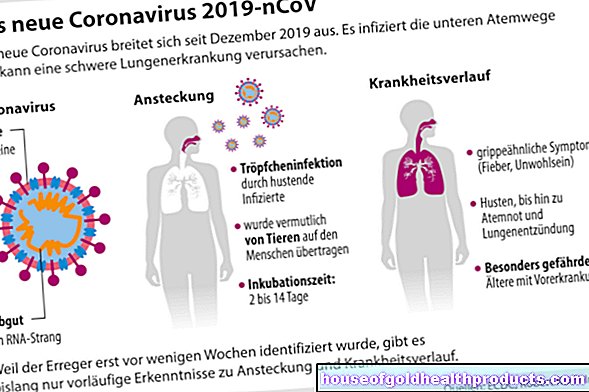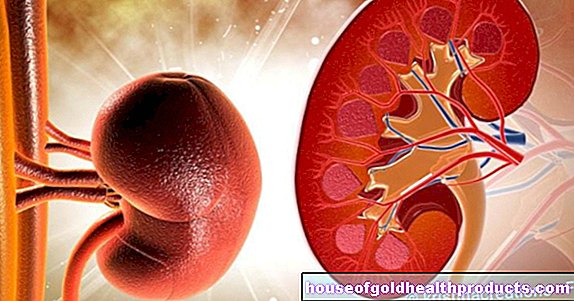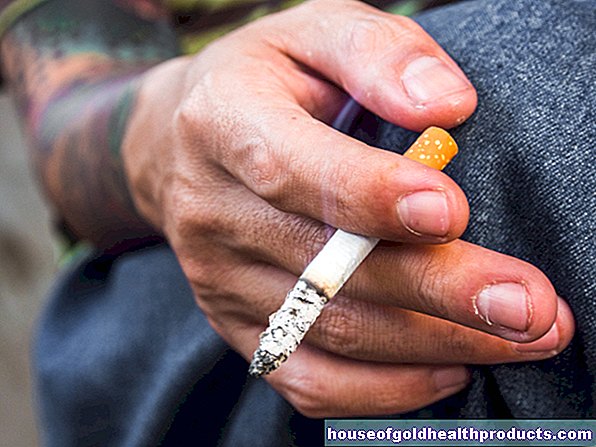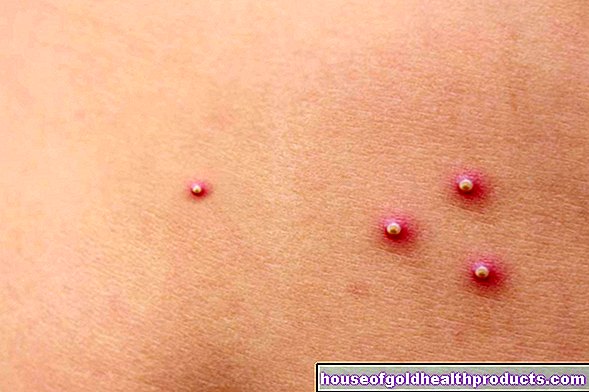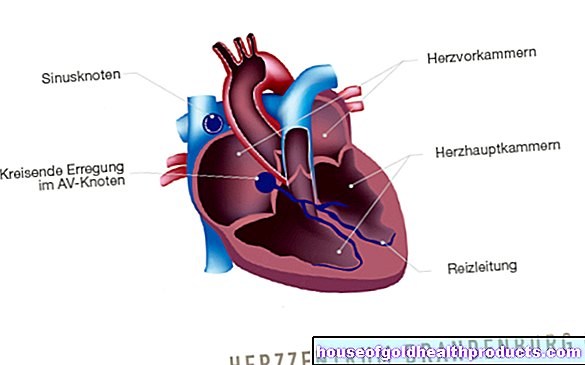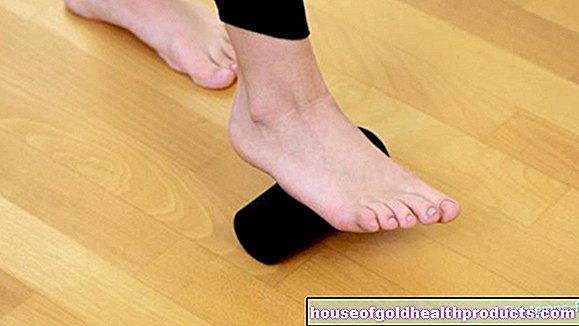Tooth decay treatment
All content is checked by medical journalists.Caries treatment is necessary when the tooth structure is damaged by bacteria. Because without treatment, tooth decay progresses continuously. The bacteria can even spread to the dental nerve and jawbone and cause severe inflammation. It is therefore advisable to act quickly: the earlier tooth decay is detected and treated, the better the prognosis. Read everything you need to know about caries treatment here.
ICD codes for this disease: ICD codes are internationally recognized codes for medical diagnoses. They can be found, for example, in doctor's letters or on certificates of incapacity for work. K02
Treatment of caries in the early stages
In early-stage caries, changes are only found on the surface of the teeth; a hole has not yet formed. At such an early stage, treatment by the dentist is not absolutely necessary. You can try to see if you can remove the tooth decay yourself.
On the one hand, you should consume as few sugary foods and drinks as possible. If you often reach for chocolate, pudding, ice cream, sweets, soft drinks & Co., you increase the risk that the tooth decay will spread further. Caution: In addition to normal household sugar (sucrose), fruit sugar (fructose), which is mainly found in fruit and baked goods, but also in vegetables, can damage teeth.
On the other hand, caries treatment (as well as caries prevention) includes thorough oral hygiene. It is best to brush your teeth after every meal. If that is not possible, you can alternatively chew chewing gum (without added sugar, but with xylitol). This at least normalizes the pH value in the mouth and stimulates the flow of saliva (food residues are more easily removed from the teeth).
Use fluoride toothpaste to brush your teeth. This helps to store minerals in the tooth enamel and thus harden it. It then becomes more resistant to tooth decay.
In order to be able to cure incipient tooth decay, regular professional fluoridation measures should also be carried out. To do this, the dentist first removes any plaque that has accumulated on the teeth. Then a fluoride varnish is applied to the affected areas. In some cases, antibacterial treatment is also carried out. For this purpose, special rinsing solutions or gels are prescribed that are intended to reduce the amount of bacteria in the mouth.
After this caries treatment, regular check-ups at the dentist should be carried out in order to keep an eye on the further progress. In the best case scenario, these measures have stopped tooth decay and the minerals previously broken down are replaced by components of the saliva over time. However, the tooth decay can just as easily progress.
Caries treatment in advanced stages
As soon as the caries no longer only affects the surface of the tooth, but already affects deeper layers, caries treatment must be carried out at the dentist. Depending on where the damage is, how far it has progressed and what costs you are willing to pay, there are different options for removing tooth decay.
Usually the drill is used for this. In the case of sensitive teeth, this caries treatment is carried out under local anesthesia. When drilling, the dentist removes the destroyed tooth substance. He then cleans the borehole and then closes it with a filling that is sealed from the outside with a seal.
If much of the tooth substance has already been lost, the shape of the tooth is restored from the outside. So-called matrices serve as a template in order to be able to bring the tooth back into its natural shape as far as possible and to prevent possible chewing problems with the opposite side of the tooth.
If tooth decay is very close to the tooth nerve, special therapy is necessary. If the nerve tissue is already damaged, it must be protected with a root filling. To do this, the dentin is filled with a substance containing calcium hydroxide. This is supposed to stimulate the dentin to form new substance. Only then can normal tooth filling be done.
Root canal treatment
The aim of a root canal treatment (root canal treatment) is to preserve a severely damaged tooth. It is usually done on a damaged tooth nerve. In the past, damaged teeth that had affected the tooth nerve were extracted. Today, tooth extraction can be avoided in many cases through root canal treatment.
For a permanently good result, bacteria and dead tissue must be completely removed from the root canal. Later the channel is tightly sealed with a filler material.
A root canal treatment can be carried out on a living, inflamed or already dead tooth nerve.
Caries treatment: fillings
In principle, different materials are available for tooth fillings in the treatment of caries (you will find more detailed information on the individual filling materials below):
- Ceramics
- Plastics (compomer / composite)
- Metal alloys (e.g. gold)
- amalgam
Which filling is suitable in your case depends on various factors. On the one hand, the different materials have different properties (service life) and are each suitable for different tooth problems. Last but not least, the costs also vary depending on the filling material. And not all fillings are paid for by the cash registers (e.g. gold hammer fillings).
The information on the shelf life of the fillings is based on statistical data. In the individual case, the service life can differ greatly. The decisive factor here is how well the patient takes care of their restored teeth.
The fillings mentioned all belong to the so-called plastic fillings. This means that they are introduced into the tooth in a liquid state and can thus adapt precisely to the drill hole before they are hardened.
Alternatively, there are also inlays (so-called inlays). These are made in the laboratory based on a previously poured model of the hole in the tooth. Inlay fillings are very expensive and are therefore of little importance in the treatment of caries.
Treatment of caries with composite
Composite is an artificially produced material that consists of around 80 percent of a salt of silicic acid and around 20 percent of plastic. It is very dimensionally stable and extremely durable. In addition, depending on the application scheme, it adapts very well to the natural tooth color. In the case of small caries damage, it is often sufficient to prepare the hole, add the composite in a single step and cure it with a special light.
Caries treatment with compomer and glass ionomer cement
Compomer and glass ionomer cement are two substances that can only be used for the treatment of caries in milk teeth and tooth necks. They are not suitable for filling chewing surfaces. The reason: Since they are relatively soft, they cannot withstand the great pressure on the chewing surfaces. In addition, they only have a limited shelf life - fillings made from these materials must therefore be checked regularly by a dentist.
Caries treatment with amalgam
The treatment of caries with amalgam is widespread, but sometimes controversial. This is a metal mixture of silver, copper and tin, as well as poisonous mercury. The latter is bound in its crystallized (i.e. solid) form in these dental fillings and is therefore harmless. However, it cannot be ruled out that traces of it will loosen and then be freely present in the oral cavity - especially if the fillings have to be replaced or processed.
Nevertheless, amalgam is still approved as a dental filling. The mercury uptake through amalgam-containing dental fillings is estimated to be about as high as the mercury uptake through diet. And this amount is considered harmless according to international standards. The use of fillings containing mercury is only restricted in children and pregnant and breastfeeding women.
Caries treatment: gold hammer filling
A filling method that is very rare today is the gold hammer filling. Individual thin gold foils are placed on the tooth and tapped into the existing hole. The side surfaces or the chewing surfaces with their numerous elevations are thus reshaped piece by piece. The gold hammer filling is very complex to use, and the finished filling is also clearly visible. Their advantage, however, is that they are very durable.
Newer methods of caries treatment
Can you also do something about tooth decay without drilling? Yes, with the help of laser technology. The caries bacteria are removed with the help of laser beams. This method has the advantage of being less painful than drilling. However, the costs for caries treatment with a laser are not covered by the statutory health insurance companies.
Another new method of caries treatment without drilling, which is already being used by dentists, is infiltration with plastic (also known as the icon method). The hole in the tooth is not drilled open, but filled with plastic from the outside. The bacteria are supposed to be locked in and thus rendered harmless.
After caries treatment
After caries treatment, the symptoms are completely eliminated in the best case. But especially after deep surgery, toothache can still occur for two to three days. These only become noticeable a few hours after the dentist's visit, when the effect of the anesthetic injection wears off. Pain also occurs especially at night, as the tooth area is supplied with more blood when lying down. There may also be pressure on the affected tooth at first.
Toothache lasting two to three days after caries treatment is usually normal. However, if the pain does not go away, you should go to the dentist again. Cooling and / or pain reliever medication can help relieve the pain. For the latter, the following applies: It should not be necessary to take the painkillers for more than three days after treating caries - otherwise, go to the dentist!
Have you had your tooth decay treated and now you feel safe? Wrong thought - a single tooth decay treatment does not prevent tooth decay from recurring. You should therefore follow the dentist's recommendations afterwards and pay attention to careful oral hygiene and a tooth-friendly diet - especially in the early stages after caries treatment, but also in the long term.
Tags: Diagnosis anatomy healthy feet





